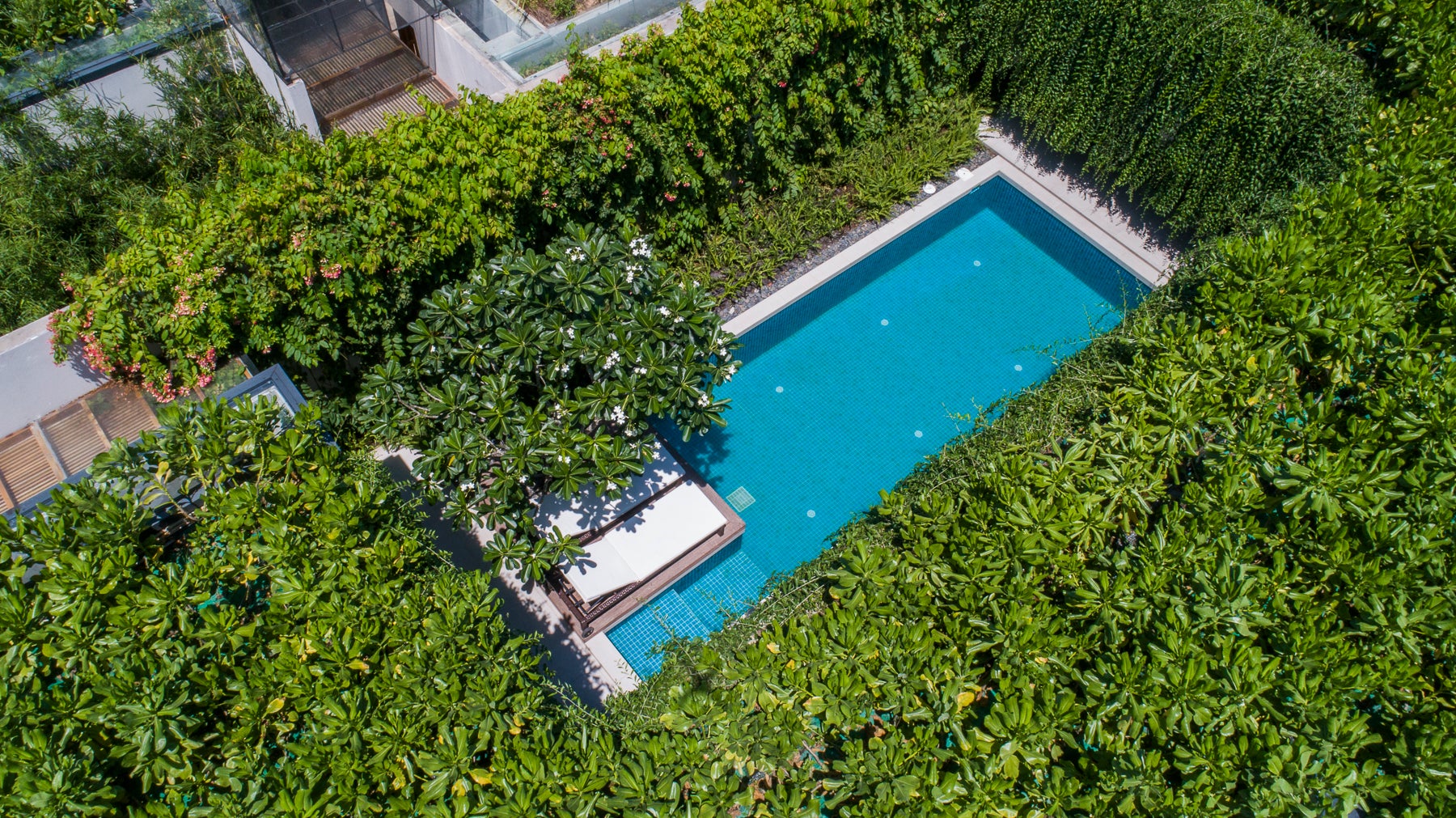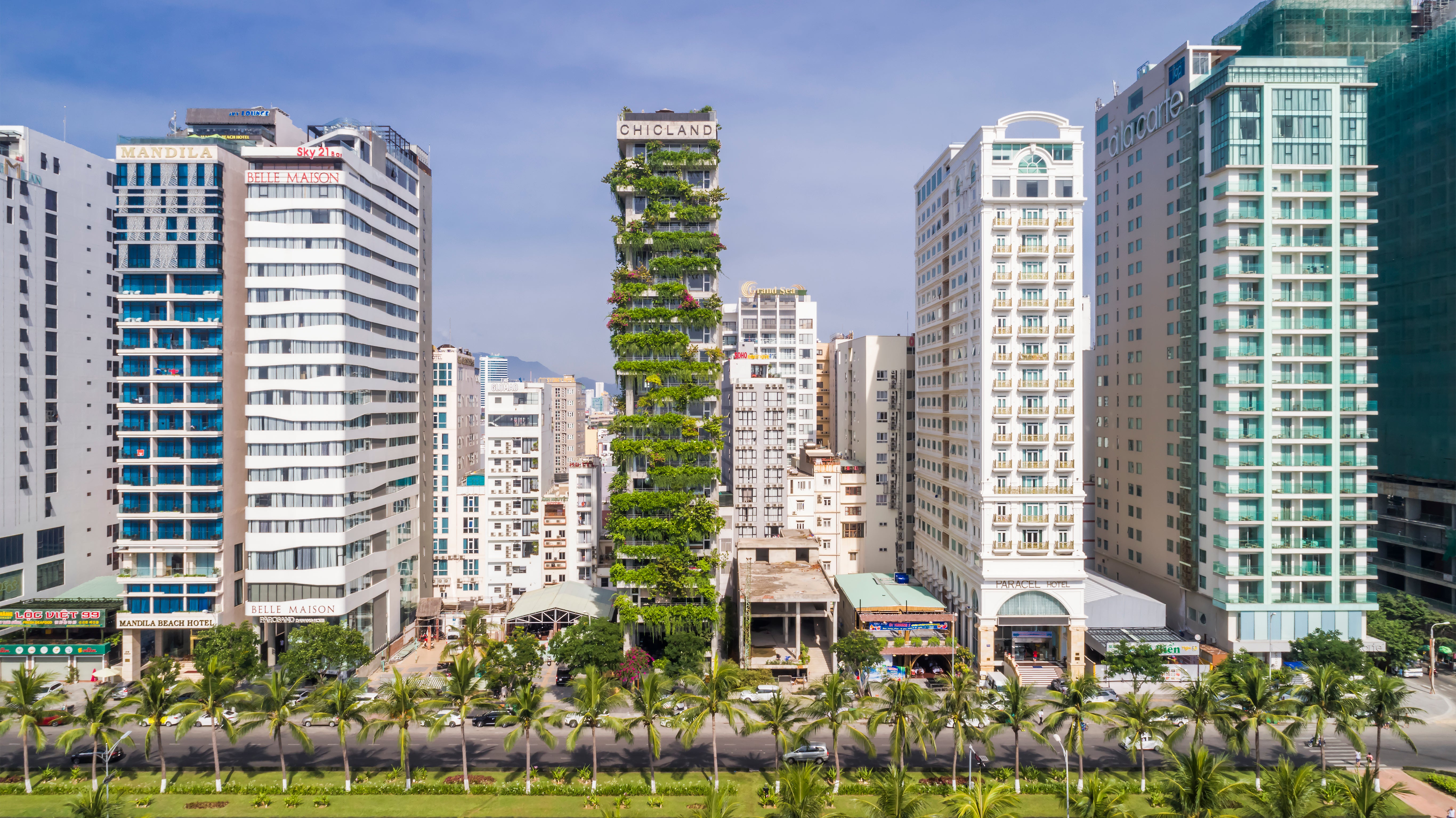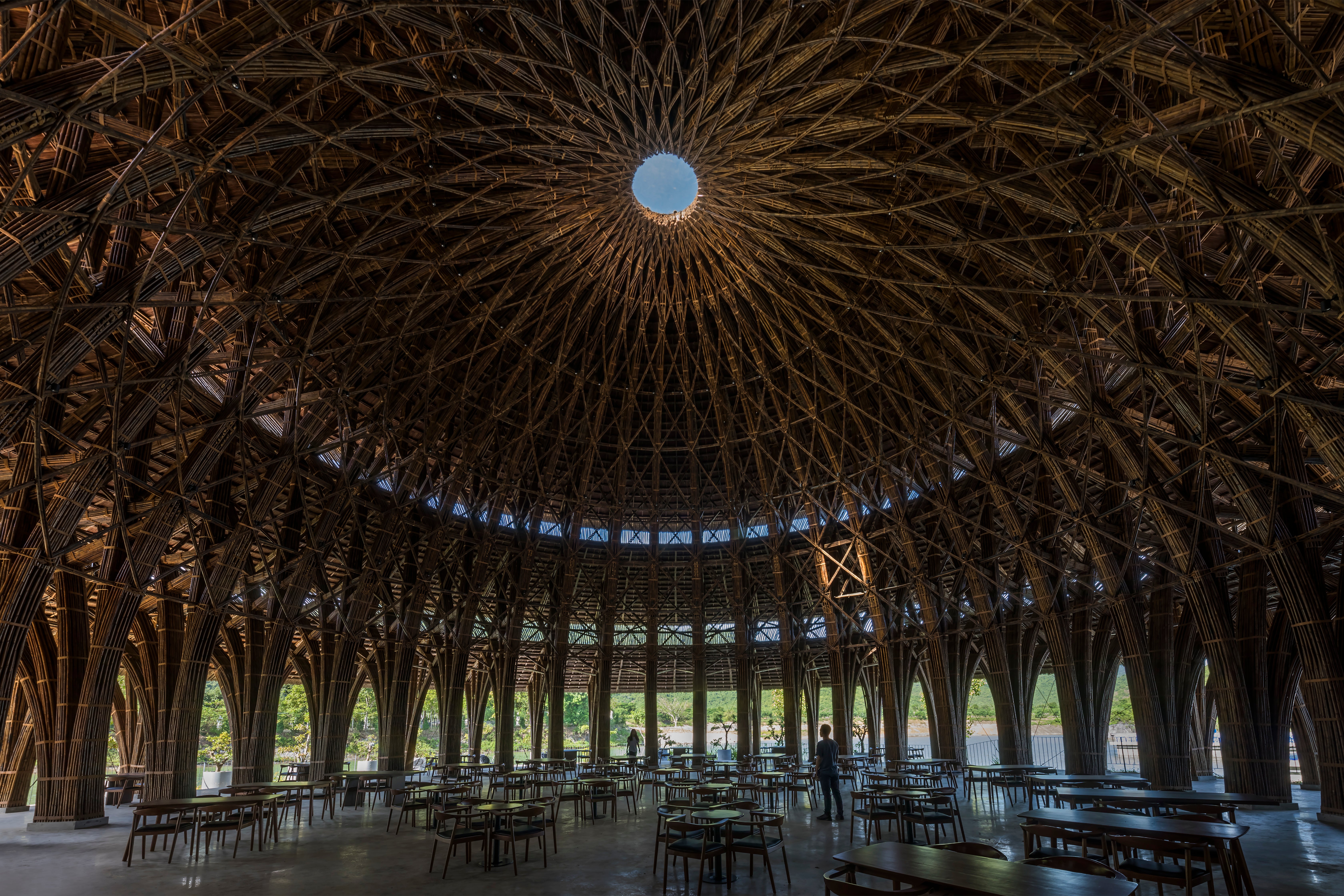How architects are greening up Vietnam’s hotel scene
Inspired by the country’s lush landscapes, a new generation of architects is looking to embed nature into Vietnam’s construction culture. Joshua Zukas reports

On a diamond-shaped island in southern Vietnam sits a collection of small lagoons enveloped by leafy vines. Adding to the hanging greenery are flourishing frangipani trees blooming with butter yellow champa flowers and bunches of bamboo stalks supporting a lime green canopy. Verdant though it is, this forest isn’t wild. And despite the botanic setting, the lagoons are actually secluded swimming pools. Wyndham Garden’s 36 villas are to open later this year on Phu Quoc Island, a tourism hotspot, but unlike the Radisson, Movenpick, JW Marriott and other international hotel names setting up shop there, this resort is distinctly low rise.
“Over the years I’ve seen a lot of projects in Vietnam that just want to be massive,” says Nguyen Hoang Manh, the lead architect at MIA Design Studio, the firm that designed and landscaped Wyndham Garden. “They don’t see the value of keeping the balance between the building and the living environment; there is no dialogue with nature.”
MIA Design Studio is among the businesses spearheading Vietnam’s biophilic architecture movement, which aims to construct built environments that connect people with nature. The movement is in line with the biophilic hypothesis, which asserts that humans have an innate love for the natural world. Vietnam’s economy has developed at breakneck speed since the 1990s, but accompanying this progress is a building boom that seemingly rejects greenery. Biophilic architects are looking to reverse that trend.
In central Ho Chi Minh City, overshadowed by the gigantic Hilton Saigon Hotel, is The Myst Dong Khoi, designed by Nguyen Hoa Hiep of a21studio, another local architecture firm specialising in biophilia. Unlike the humdrum buildings that surround it, plants burst through the facade of The Myst Dong Khoi to deliver flashes of green in one of the city’s most concrete-dominated neighbourhoods.
This echoes the work of Vo Trong Nghia, probably Vietnam’s most well-known biophilic architect. In Danang, a beach city in central Vietnam, he built Chicland Hotel with front-facing balconies that overflow with tropical plants, including bougainvillea trees that bloom pink and purple in the dry season. In Ninh Binh, a northern province famed for its karst mountains and rivers, Vo built the Vedana Hotel restaurant from bamboo so that it catches the breeze and doesn’t require air-conditioning. According to Vo, biophilic architecture isn’t just aesthetic. “Greenery and natural materials help cool buildings, reduce energy bills and can even fight flooding if done on a large enough scale.”

When it comes to building sustainably, proponents of Vietnam’s green architecture movement share the views of Thomas Heatherwick, Britain’s most well-known biophilic designer: buildings that link humans with nature and evoke an emotional response are less likely to be destroyed and replaced. “I want my buildings to outlast not only me, but also my children,” says Vo, who appreciates that only architecture that endures can be considered sustainable.
Not everyone is convinced. “To have truly sustainable buildings, there are a lot of things to consider,” says Dang Thanh Long, the executive director of the Vietnam Green Building Council, which grades the sustainability of buildings. “It’s not just about having green spaces and it’s not about planting as many trees as possible.”
Biophilic architecture has come under fire in recent years, with critics arguing that the extra materials needed to embed plants in structures simply increase buildings’ carbon footprints.
I want my buildings to outlast not only me, but also my children
Ho Chi Minh City-based Kanopya decided to take a different approach to sustainable accommodation construction, with lodges that cause minimal damage to the environment. The detached lodges are agile enough to fit within natural clearings, eliminating the need for land levelling and tree felling, and they are raised on stilts to have the lowest possible impact on the soil. Kanopya lodges are also moveable, which means they can migrate to new locations and allow their former sites to recover.

According to Charles Gallavardin, an architect and co-founder of Kanopya, it’s “our bioclimatic approach that really makes us unique”. While biophilic design seeks to link humans with nature, bioclimatic design harnesses the local climate for optimum human comfort and minimal energy use.
That the lodges are raised on stilts helps preserve the soil, but it also reduces humidity. A large fabric roof canopy not only protects against rain, but also repels heat from the sun. Sensible positioning and wraparound windows encourage cross ventilation and natural cooling. “If you compare these lodges to the average five-star resort in Vietnam, Kanopya uses a quarter of the energy per square metre,” Gallavardin says. The first Kanopya lodges will be installed later this year outside of Hoi An in central Vietnam.

Whether through a biophilic or bioclimatic approach, Vietnam’s construction culture is beginning to shift, and the result may be more hotel options that better introduce visitors to the friendlier side of the country’s phenomenal flora and fauna. “Some people say, ‘What about snakes? What about insects?’” laughs Nguyen of MIA Design Studio. “I always reply, ‘But think about the birdsong in the morning. Think about the butterflies in the afternoon.’ Nature isn’t something we should be scared of.”

Join our commenting forum
Join thought-provoking conversations, follow other Independent readers and see their replies
Comments